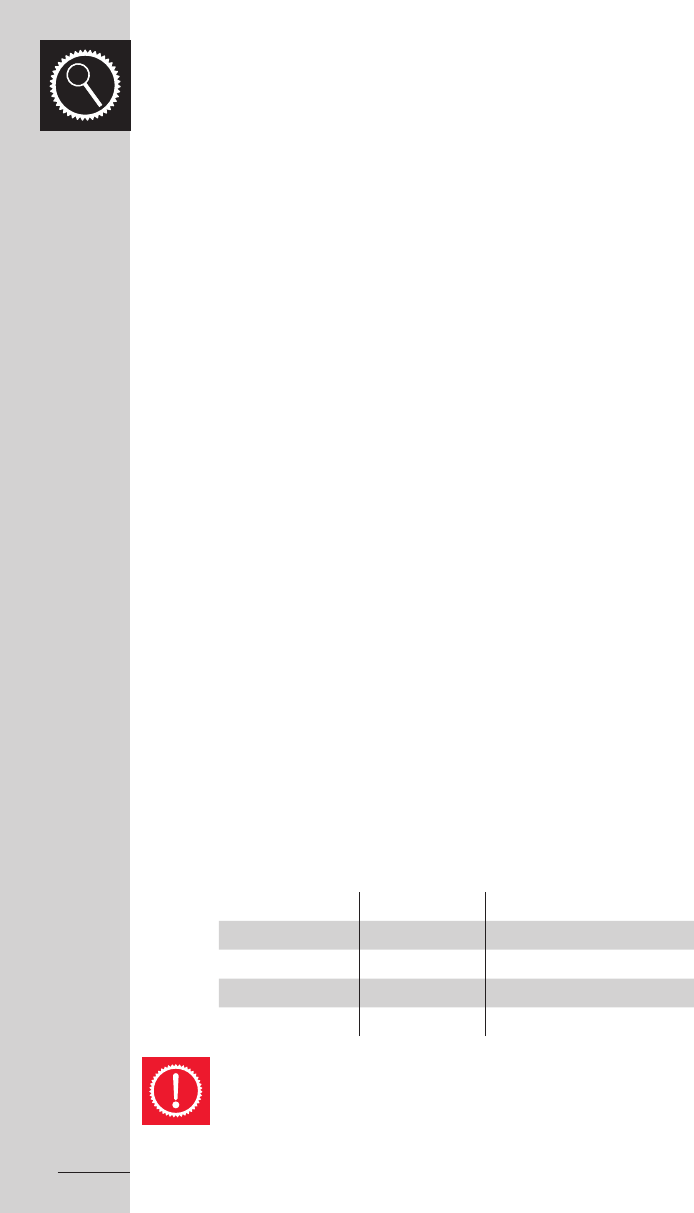
Updated 23/05/07RAOM0507 Apollo Bicycle Company Pty. Ltd. ABN: 60 001 914 469
28
Tyre inspection
As tyres are the rider’s only contact with the road, correct tyre maintenance is crucial
for stability and safety. Consider the following when inspecting your tyres:
Tread: Check the tread for signs of excessive wear or flat spots, and cuts or damage.
Caution: Riding on excessively worn or damaged tyres may be hazardous so tyres should
be replaced.
Inflation: Maintain tyre pressure at the level recommended on the tyre sidewalls.
Preferably use a tyre gauge and a hand pump to inflate rather than a service station pump.
Caution: Using a service station pump for inflation can lead to sudden over inflation,
potentially resulting in a blow out.
Valves: A flat tyre is not only inconvenient but potentially dangerous. To minimise the
likelihood of a flat tyre from air leaking from a valve, ensure valve caps are fitted and that
valves are clean.
Bead setting: Ensure the bead is correctly fitted in the rim when inflating or changing tyres.
Recommended Tyre Pressures:
Tyre pressure directly influences the performance of a tyre on different surfaces and in
varying weather conditions. Recommended tyre pressure is given either as maximum
pressure or as a pressure range.
For riding on smooth, slick terrain such as hard-packed clay and on deep, loose surfaces
such as deep, dry sand, tyres should be inflated to lower pressures, at the bottom of the
recommended pressure range. This helps to cushion the rider against the impact.
Using high pressures, at the top of the recommended pressure range enables a faster
but rougher ride. These pressures are ideal for riding on a smooth, dry pavement.
Failure to sufficiently inflate the tyres according to the rider’s weight and intended use can
cause the tube to puncture.
Tyres should be inflated to the recommended pressure moulded on the sidewall of
the bicycle’s tyres. Use this chart as a reference if you are unable to find the relevant
information on your tyre.
BMX 241 - 344 k.p.a. (35-50 p.s.i.)
MTB 276 - 448 k.p.a. (40-65 p.s.i.)
Road Touring 483 - 620 k.p.a. (35-50 p.s.i.)
Road Racing 755 - 862 k.p.a. (110-125 p.s.i.)
Hybrid/Crossbike 414 - 690 k.p.a. (60-100 p.s.i.)
Caution:
Service station pumps and pencil type automotive tyre gauges should not be
relied upon for consistent, accurate readings. A good quality dial gauge should
be used as it is far more accurate and reliable.


















